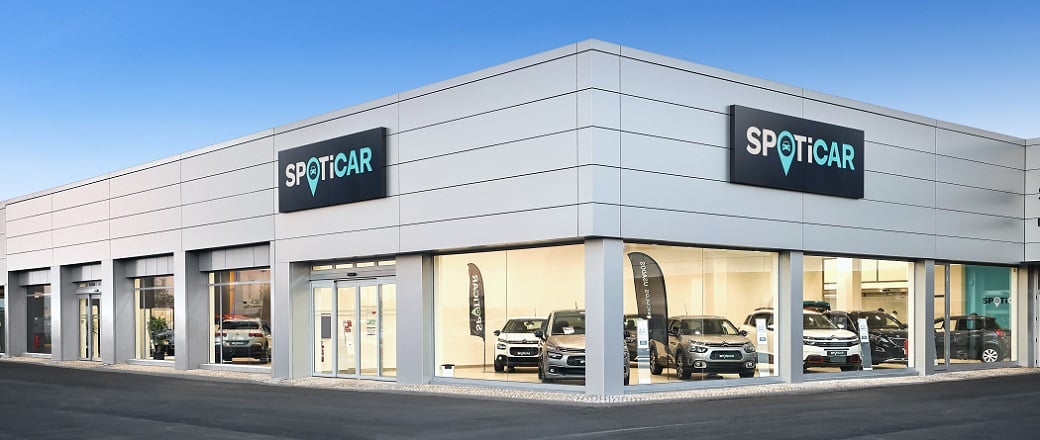Automotive Market: Rise of Used Cars and Electric Vehicles in 2021

It’s the great disparity: while new car sales bring us back to the figures of the 1970s, the used car market is booming, surpassing six million registrations for the first time.
With 1,659,004 new car registrations in 2021, the French automotive business continues its slow decline. This figure is as poor as that of 2020 (less than 9,000 additional cars) when dealerships were closed for several months. We also observe a decrease of over 25% compared to 2019, the last normal year of car sales. These figures can also be compared to the mid-1970s, before the annual average stabilized around two million in the early 1980s, and has persisted since. The only variables since then have been scrappage incentives and other government measures to respond to the occasional lobbying by manufacturers, which boosted sales to nearly 2.3 million some years, only to be followed by a slump to 1.8 million the next year. But, overall, the average of two million was maintained.
This time, the situation is different, and the downward or even declining trend could be permanent. Amid economic uncertainties and market electrification, with cars that may not convince all users and that not everyone will be able to afford, people are keeping their internal combustion models longer, thereby activating the used car market. Lastly, the ongoing component shortages are extending delivery times and discouraging buyers. Some brands, those with the capacity to secure stock — in other words German premium brands — have fared better and continued to deliver. But the party is over for everyone. It’s not just a difficult first half of 2022, but a challenging year overall.
The Groups Save the Day
In this turmoil, the major French industrial groups in 2022 stabilized most of their key brands: -0.5% for Citroën, +2.4% for DS Automobiles, -5.3% for Peugeot. But -14.5% for Renault (almost as bad as Opel with -14.6%), and +28.9% for Dacia, which sells less than half the volume of the Renault brand (125,204 registrations versus 268,951). Dacia is therefore the standout phenomenon of the year and the strongest performer, thanks to a fresh product plan, trust from less affluent customers, and a larger stock thanks to less advanced technology and thus fewer missing parts.
Consumers at Their Lowest, Used Cars in Good Shape
Paradoxically, sales to French households only accounted for 43.43% of registrations in 2021. This is a historic low, as it is usually around 50% or slightly more in normal times. The phenomenon can be explained by several reasons, foremost among them being the longer delivery times which diverted customers toward used cars. We can also consider the complexity of the offer and rising prices amid an uncertain economic future. However, while one might think that recent used cars would be the primary beneficiaries of this crisis affecting all manufacturers, it is actually cars over 10 years old that saw a jump. Overall, all age categories performed well, but recent used cars slightly declined, also due to a sudden increase in prices driven by rising demand.
In this context, used vehicle registrations in France have surpassed six million for the first time. That’s a 7.23% increase compared to 2020, which was already a historically high year.
And Electric Cars?
For now, there is a significant disconnect between advertising, new models being launched, and market reality. Because considering manufacturers’ communications, the new models making headlines, and even Tesla’s surprising success (24,911 Model 3s sold in France in 2021, ranking 14th nationally and the top electric car, ahead of the Renault Zoe), one might think electric cars are all that matter. Yet, they account for barely 10% of sales. Still, this figure is rapidly increasing (+46.14%) and will continue to grow. Also very successful are hybrid vehicles, representing 25.8% of sales, of which 8.5% are plug-in models. Here too, there is a market effect, existing offerings, and fiscal incentives (elimination of vehicle tax for companies), which has driven an increase of over 88% in sales.
What Next?
No one has a crystal ball, but it seems clear that current trends will intensify. Electrified models will become more common in the new car market, leading to stagnating sales. Factors include high prices, stock shortages related to the semiconductor and chip crisis, and a lack of visibility for both businesses and consumers. As long as the virus persists, the tunnel will remain foggy. On the other hand, used car sales will continue to grow at least until the end of 2022, before a potential collapse when normalcy returns. An odd era for the automotive industry.
This page is translated from the original post "Marché automobile : essor de l’occasion et de l’électrique en 2021" in French.
We also suggestthese articles:
Also read





